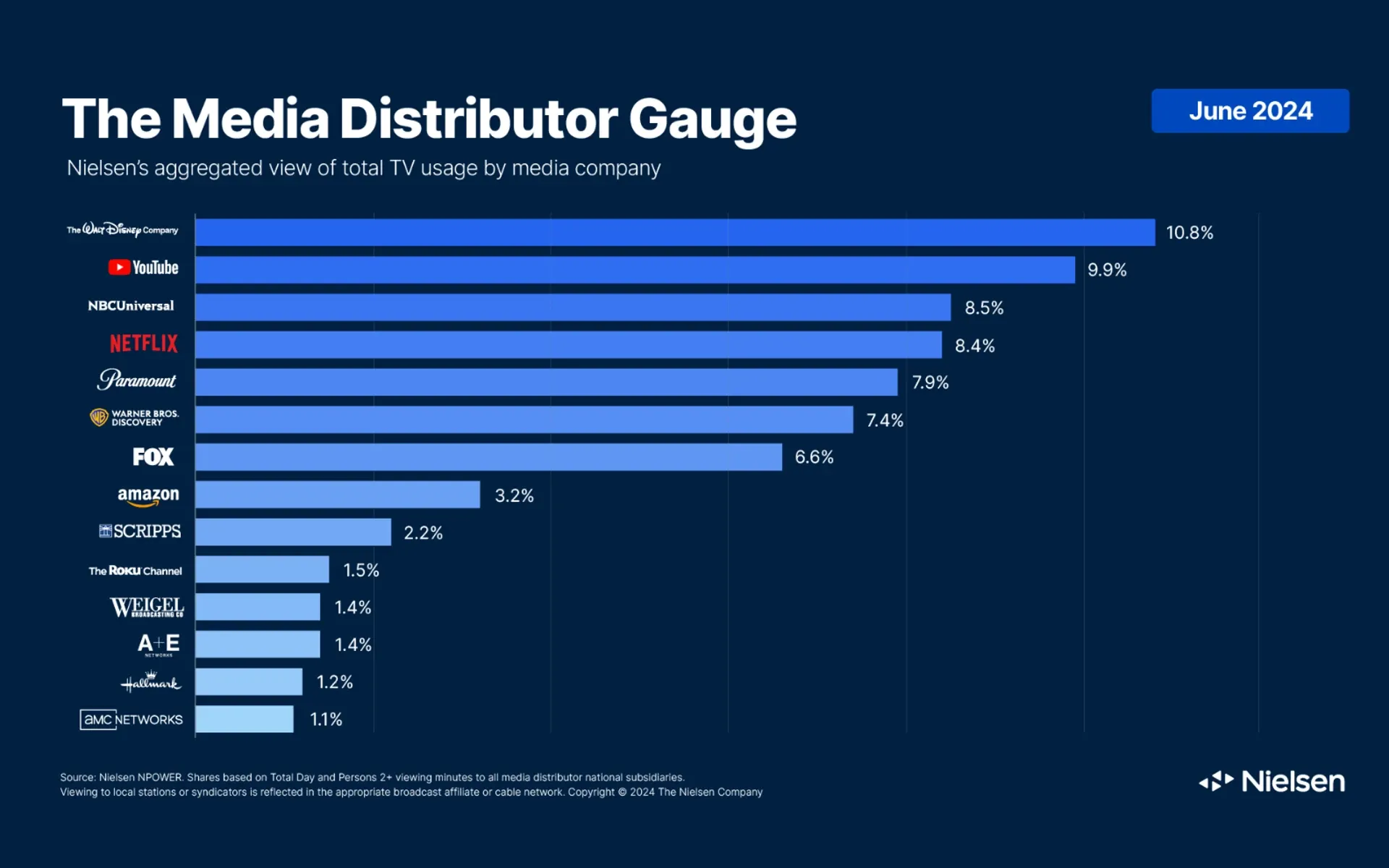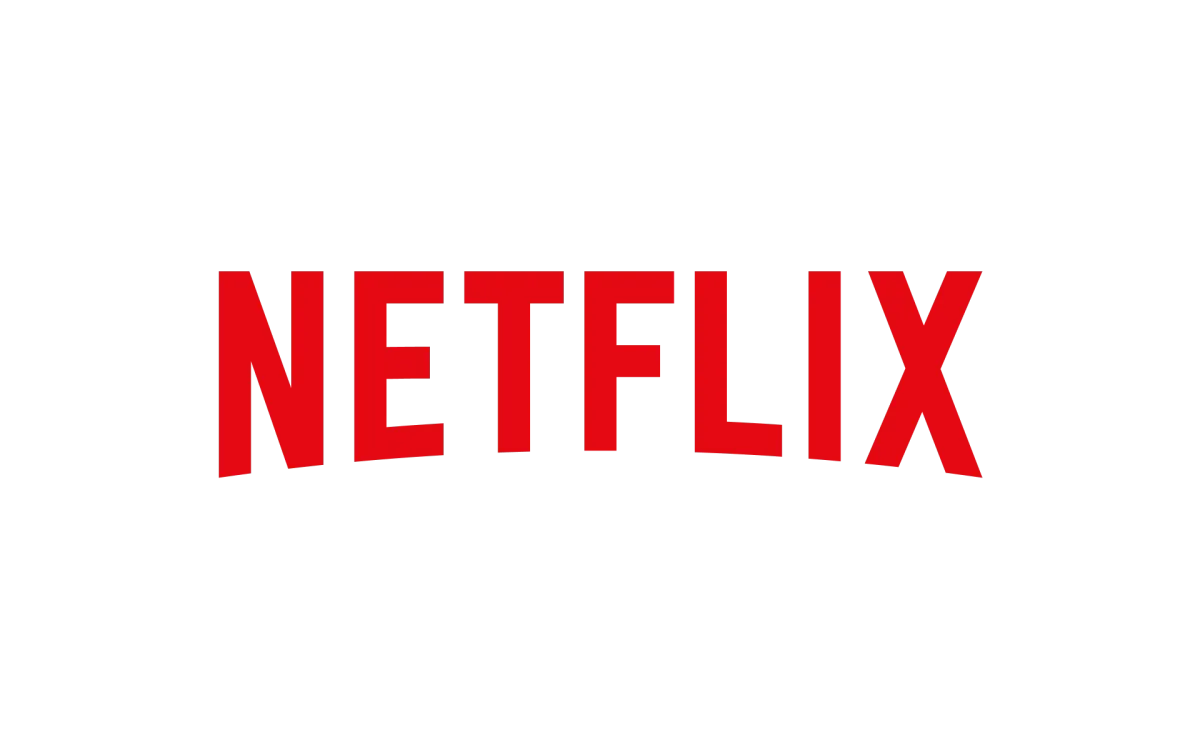Netflix surges in Nielsen rankings, streaming dominates TV consumption
Nielsen report shows Netflix's 11.8% growth in June, as streaming platforms capture 40.3% of total TV viewing time.

Nielsen this week released its June 2024 Media Distributor Gauge report, revealing significant shifts in television consumption patterns across the United States. The report, which provides a comprehensive cross-platform view of total TV usage aggregated by media company, highlighted Netflix's remarkable growth and the continued dominance of streaming platforms in capturing viewers' attention. This monthly snapshot offers crucial insights into the evolving habits of TV audiences and the competitive dynamics among media distributors.
According to Nielsen's findings, Netflix exhibited the most substantial monthly growth among all media distributors, with a striking 11.8% increase in usage compared to May 2024. This surge propelled Netflix from the sixth position in May to the fourth-ranking media company in June, accounting for 8.4% of total TV usage for the month. The streaming giant's performance underscores the ongoing shift in viewer preferences towards on-demand content and the platform's ability to attract and retain audiences with its diverse programming lineup.
The broader context of this growth is equally noteworthy. Nielsen's report indicates that streaming accounted for 40.3% of total time spent watching TV in June, a figure that illustrates the seismic shift in media consumption habits. This trend is not isolated to Netflix alone; other pure-play streamers like YouTube also saw significant benefits from what Nielsen describes as "a big streaming month."

YouTube, in particular, demonstrated robust growth, with time spent watching its content on television increasing by 4.2% in June. This uptick secured YouTube's position as the second-largest share of TV among media distributors, approaching 9.9% of total TV usage. The platform's success can be attributed to its vast array of user-generated content, professional productions, and its increasing focus on long-form content that appeals to traditional TV viewers.
While streaming platforms showed remarkable growth, traditional media companies with diverse portfolios also made notable gains. Disney maintained its top spot among media distributors, capturing 10.8% of June's TV viewing time. This achievement was driven largely by a 15% increase in Disney+ usage, highlighting the company's successful strategy in leveraging its streaming service alongside its traditional TV offerings.
The competitive landscape revealed by Nielsen's report extends beyond the top performers. Fox, for instance, climbed to 6.6% of TV usage, marking a 0.2 percentage point increase. This growth was partly fueled by the performance of Tubi, Fox's ad-supported streaming service, which accounted for 2.0% of TV usage in June and saw a 15% increase in usage. Tubi's success demonstrates the potential of ad-supported streaming models in capturing market share.
NBCUniversal (NBCU) retained its position as the third-ranking media distributor in June, despite a slight decline to 8.5% of TV usage. The company's upcoming coverage of the Olympic Games is expected to significantly boost its viewership across all platforms in July and August, as historically, Olympic coverage has drawn large audiences.
Interestingly, the report also sheds light on the performance of cable networks in the absence of sports and drama content on broadcast networks. Cable entrants such as A&E, AMC, and Hallmark capitalized on this gap, seeing increases in viewing across cable's feature film and drama genres. A&E secured a 1.4% share of TV, up 11.1% from the previous month. Hallmark and AMC also saw gains, reaching 1.2% and 1.1% shares of TV, respectively.
The measurement interval for the June 2024 report spanned from May 27, 2024, through June 30, 2024, providing a comprehensive view of viewing habits as the summer season began. This timing is crucial to consider, as viewing patterns often shift during the summer months when outdoor activities compete for attention and many broadcast networks air reruns or less popular programming.
The methodology behind the Gauge involves sophisticated measurement techniques that capture viewing data across various devices and platforms. Nielsen's approach includes both panel-based measurement and big data sources, allowing for a comprehensive view of audience behavior. This combination of methodologies enables Nielsen to provide insights into not just what people are watching, but how they are accessing content across different media distributors.
One of the key technical aspects of Nielsen's measurement is its ability to track streaming viewership on television screens. This is particularly important as more households use smart TVs or streaming devices to access content from services like Netflix, YouTube, and Disney+. The ability to accurately measure this viewing alongside traditional broadcast and cable consumption provides a more complete picture of the TV landscape.
The implications of Nielsen's June report are far-reaching for the media industry. For streaming platforms, the data reinforces their growing importance in the media ecosystem and may influence content acquisition and production strategies. Traditional media companies, meanwhile, may need to reassess their distribution strategies and investment in streaming services to remain competitive.
Advertisers and marketers will also find valuable insights in this report. The shift towards streaming, particularly ad-supported platforms like Tubi, opens up new opportunities for targeted advertising. However, it also presents challenges in reaching fragmented audiences across multiple platforms.
Looking ahead, several questions emerge from this data. Will Netflix be able to maintain its growth trajectory, or will increased competition from other streaming services impact its market share? How will traditional media companies adapt to the continued shift towards streaming? And what role will emerging technologies, such as augmented and virtual reality, play in shaping future TV consumption habits?
Key facts
Nielsen released its June 2024 Media Distributor Gauge report on July 23, 2024.
Netflix saw an 11.8% increase in usage compared to May 2024, moving from 6th to 4th place among media distributors.
Streaming accounted for 40.3% of total time spent watching TV in June.
YouTube increased its TV usage by 4.2%, reaching 9.9% of total TV usage.
Disney maintained the top spot with 10.8% of TV viewing time, driven by a 15% increase in Disney+ usage.
Fox climbed to 6.6% of TV usage, partly due to Tubi's 15% growth.
NBCUniversal retained third place with 8.5% of TV usage.
Cable networks A&E, Hallmark, and AMC saw gains in the absence of sports and drama content on broadcast networks.
The measurement interval was May 27, 2024, through June 30, 2024.
Nielsen's Media Distributor Gauge provides a cross-platform view of total TV consumption aggregated by media company.


